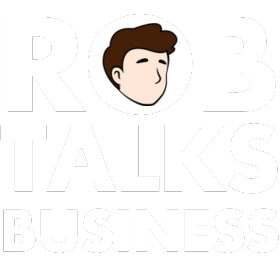"Whosoever desires constant success must change his conduct with the times." - Niccolò Machiavelli
In the game of startups, pivots or product releases, one of the most critical hurdles you face is ensuring that your audience has the means - and the will - to buy from you.
It is easy to project past successes on new ventures. It is hard to be objective and look inward - will this actually work?
You may have crafted the most brilliant product, perfected every detail, but if your target market lacks the resources or the desire to invest in it, you will fail.
This is an age-old dilemma, and no one understood the nuances of persuasion and power dynamics better than Niccolò Machiavelli.
His failed attempt to build a Florentine militia in the 16th century reveals timeless lessons for overcoming budgetary resistance - lessons that resonate in today’s marketplace.
Machiavelli’s Battle for Budget: The Mercenary Problem
During Machiavelli’s time, Florence’s defense relied on mercenaries - hired soldiers who were loyal only to gold.
These men would abandon the battlefield or switch sides for a higher bidder, leaving Florence vulnerable.
Machiavelli proposed a revolutionary idea: to create a citizen militia - a force of Florentine-born soldiers, loyal to their city, could defend it far more reliably than mercenaries.
But despite the clarity of his vision, Machiavelli’s plan faltered. He faced obstacles familiar to any entrepreneur or strategist today:
Budget Concerns: Building a militia required significant resources. Florence’s ruling elite, focused on more immediate priorities, refused to divert funds for what they saw as a distant and uncertain benefit.
Internal Resistance: Officials who profited from the mercenary system feared Machiavelli’s plan would strip them of influence. They defended their interests rather than the city’s.
Risk Aversion: The mercenary system was flawed, but it was familiar. Florence’s leaders clung to what they knew, reluctant to gamble on an untested solution.
Machiavelli failed not because his plan lacked merit, but because he underestimated the obstacles of budget allocation, internal politics, and fear of the unknown.
His story mirrors the modern struggle of convincing potential customers to invest in your product, no matter how superior it may be.
The Modern Struggle: The Lucrative Market Myth
Today, entrepreneurs fall into similar traps, especially in markets with limited budgets.
Consider the countless startups launched by college students, who pitch products aimed at solving their peers' problems - discounts for food, affordable SaaS tools, and so on.
But these ventures often fail because college students have no money. The problems are real, but the market lacks the financial capacity to support a solution.
The same issue arises when selling to large corporations.
You might assume that with their deep pockets, they’ll easily allocate a budget for your product.
Yet, unless your solution addresses one of their top priorities, your pitch will fall flat.
No matter how real the problem is, if it isn’t urgent, it will be ignored.
Machiavelli’s failure and the fate of countless startups teach us that you must carefully align your product with the priorities and resources of your audience.
Here are the strategies to avoid their mistakes and ensure success:
Successful Startups Align With the Top Priorities of Their Target Audience:
Just as Machiavelli’s vision for a Florentine militia was stifled by the ruling class's immediate concerns, your product will face the same fate unless it addresses the most pressing issues of your target market.
In the world of business, resources are finite - and those who control them will only release their grip for solutions that offer immediate returns. If your offering fails to present itself as the answer to their most urgent problems, it will be disregarded, no matter how innovative or superior it may be.
The key to unlocking success is to position your product as the solution that speaks directly to their immediate needs, offering tangible, short-term benefits that demand attention.
History is full of those who failed to recognize this dynamic, but in our modern era, certain startups have mastered this understanding.
They aligned their products with the top priorities of their markets, ensuring their solutions addressed immediate, burning issues, thereby cementing their dominance.
Let us examine these strategic players:
Slack – Revolutionizing Team Communication
In the digital age, communication became the Achilles' heel of many organizations. Teams were mired in endless email threads, lost messages, and inefficient meetings.
Slack seized upon this weakness, offering a platform that streamlined communication, integrating seamlessly with other key tools like Google Drive and Trello.
By consolidating messaging and file sharing, Slack positioned itself as the ultimate solution to the disorganization and delay that plagued modern teams.
Critical problem: Disorganized, slow communication across teams.
Solution: A tool that consolidates messaging, file sharing, and integrates with essential workplace tools.
Urgency: As remote work surged, Slack became indispensable, offering businesses the efficiency they desperately needed to maintain collaboration in the digital workspace.
Zoom – Solving Video Conferencing Pain Points
Before the pandemic, video conferencing was seen as a necessary evil - clunky, unreliable, and fraught with technical difficulties.
Zoom identified this growing frustration and created a platform that was stable, intuitive, and reliable. When COVID-19 forced businesses and schools to shift to remote work, Zoom was perfectly positioned as the solution to this urgent need, becoming a symbol of the new era of communication.
Critical problem: Unreliable and complicated video conferencing tools.
Solution: A seamless platform that provides high-quality video and audio, easy setup, and stability.
Urgency: The pandemic made video conferencing essential, and Zoom was the perfect tool to meet the world's sudden, dire need for remote collaboration.
Airtable – Bridging the Gap Between Spreadsheets and Databases
Companies were becoming bogged down by the inefficiencies of spreadsheets for managing projects and organizing data.
Airtable seized upon this inefficiency, offering a solution that combined the simplicity of spreadsheets with the power of a database. It wasn’t just a tool; it was the key to managing complex workflows dynamically, providing teams with the flexibility they desperately needed to handle growing volumes of information.
Critical problem: Managing complex data and workflows using inefficient tools like Excel.
Solution: A flexible, customizable platform that adapts to various needs - project management, CRM, content calendars.
Urgency: As businesses scaled, they needed dynamic ways to manage and collaborate on data, and Airtable provided the vital infrastructure to keep teams organized and productive.
Plaid – Simplifying Financial Integration
In the rapidly growing fintech world, startups needed to integrate with banking systems, but this was often a technical and security nightmare.
Plaid recognized this as a critical pain point and developed a secure, developer-friendly API that made it easy for apps to connect with user bank accounts. By solving this complex integration challenge, Plaid became the backbone of many of the most popular fintech applications, driving growth across the industry.
Critical problem: Difficulty and security concerns when connecting financial apps to bank accounts.
Solution: A secure, easy-to-use API for smooth financial integration.
Urgency: As fintech exploded, apps like Venmo, Robinhood, and Coinbase needed a reliable, quick way to connect to users’ banking data, and Plaid’s solution became foundational to their success.
Notion – All-in-One Workspace for Knowledge Management
The modern worker was inundated with tools - one for notes, another for tasks, yet another for collaboration. This fragmentation was a silent killer of productivity.
Notion emerged as a one-stop solution, allowing individuals and teams to manage their documents, tasks, and databases in a single, highly customizable platform. It wasn’t just a tool; it was the antidote to tool overload.
Critical problem: Fragmented tools for note-taking, project management, and document storage.
Solution: A single platform that combines documents, tasks, and databases, customized to the user’s needs.
Urgency: As remote work and digital collaboration became the norm, the need for a centralized workspace became critical, and Notion answered that call.
Figma – Collaborative Design Tool
The world of design was rife with inefficiencies. Teams struggled with sharing files, managing version control, and collaborating in real-time.
Figma capitalized on this chaos, offering a cloud-based tool where designers could collaborate simultaneously on the same file, streamlining the entire design process. As collaboration became more central to product development, Figma became a necessity for design teams.
Critical problem: Inefficiencies in design collaboration and file sharing.
Solution: A cloud-based tool that allows real-time, seamless collaboration.
Urgency: As design became more integral to product development and remote collaboration increased, Figma emerged as a crucial tool for design teams needing to work in sync.
Stripe – Simplifying Online Payments
In a world where time-to-market was critical, businesses couldn’t afford to spend months integrating complex, outdated payment systems.
Stripe identified this need and provided a simple, developer-friendly API that allowed companies to quickly and seamlessly integrate payment processing. For any business operating online, Stripe’s ability to cut through complexity and deliver functionality with speed became indispensable.
Critical problem: Complex and costly online payment systems that were difficult to integrate.
Solution: A simple API that allows businesses to easily accept payments and get to market faster.
Urgency: As e-commerce boomed, businesses needed a quick, efficient way to accept payments, and Stripe’s solution became the default choice for startups and enterprises alike.
In each of these examples, the startup didn’t just offer a product - they offered the right product at the right time.
They understood the urgency of the market's pain points and positioned themselves as the critical solution to those pressing needs.
This is the essence of power: to recognize the weakness in the system, exploit it with precision, and deliver what the market cannot live without.
Successful Startups Understand the Internal Politics of Their Target Audience:
Just as the Florentine officials resisted Machiavelli’s proposal for a citizen militia, fearing it would undermine their wealth and influence, modern companies exhibit similar internal resistance when faced with change.
Internal teams - whether in IT, finance, or HR - often see new solutions as threats to their power and relevance.
To overcome these entrenched interests, your strategy must be deft.
Present your product not as a threat, but as a tool of empowerment.
Position it as something that enhances their control, and you will win their favor. Understanding the political dynamics within a company is as essential as the solution itself.
Consider how these modern startups understood internal politics, expertly navigating and leveraging these dynamics to gain widespread adoption:
Dropbox – Bypassing IT Departments by Targeting End Users
When Dropbox emerged, the traditional route for adopting file-sharing solutions involved IT departments - gatekeepers who often delayed decisions due to concerns over security and compliance.
Dropbox didn’t wait for IT approval; instead, it targeted end users - individual employees frustrated with slow, cumbersome tools.
By making Dropbox easy to use and deploy without IT’s involvement, they created a grassroots movement within companies.
Critical problem: IT departments, acting as gatekeepers, were slow to adopt cloud storage due to security concerns.
Solution: Dropbox bypassed IT departments, allowing employees to adopt it on their own, without needing formal approval.
Result: Dropbox spread organically, embedded itself into workflows, and eventually forced IT departments to adopt it once it became indispensable.
Slack – Winning Over Teams to Bypass Email Gatekeepers
Executives and IT departments often dictated the use of email and legacy systems for communication.
Slack, however, didn’t approach these gatekeepers directly. Instead, it won over individual teams and employees who were frustrated by inefficient communication tools. Slack gave them an alternative, a way to collaborate without waiting for top-down approval.
Critical problem: Email and legacy systems were controlled by IT and executives, resistant to change.
Solution: Slack empowered team leaders and employees to adopt the tool autonomously, bypassing the bureaucracy.
Result: Once teams embraced Slack, its success became impossible to ignore, and it eventually became the default communication tool across entire companies.
Expensify – Focusing on Employees Rather Than Finance Departments
Expense management was traditionally controlled by finance departments, who imposed complex systems that employees hated using.
Expensify targeted the employees directly, giving them a tool that made submitting expenses fast and painless. By improving the experience for those who actually used the product, Expensify created demand from the bottom up.
Critical Problem: Finance departments enforced difficult-to-use expense reporting tools, prioritizing compliance over user experience.
Solution: Expensify focused on the needs of employees, offering a simpler, user-friendly solution for submitting expenses.
Result: As employees adopted Expensify, finance departments had no choice but to approve its use, recognizing that it improved compliance and reporting efficiency.
Zoom – Building Relationships with IT While Targeting Teams
The video conferencing market was dominated by legacy solutions like WebEx and Skype, heavily embedded within IT-controlled environments.
Zoom didn’t wait for IT to green-light their product; they went directly to the end users, providing a free version that teams could adopt instantly. But Zoom also ensured that IT departments felt secure, offering enterprise-grade features that addressed concerns around security and compliance.
Critical Problem: IT departments were entrenched in legacy video conferencing solutions and skeptical of new tools.
Solution: Zoom targeted teams with a free version while simultaneously offering IT departments enterprise features to satisfy security and compliance concerns.
Result: As teams embraced Zoom, IT departments formalized its use after seeing its effectiveness and enterprise capabilities.
Figma – Empowering Designers to Bypass Tool Procurement Processes
Design tools were traditionally chosen by procurement or development teams, often resulting in suboptimal solutions for designers.
Figma flipped the script, targeting designers directly and offering them a cloud-based, real-time collaboration tool. By eliminating the need for developers to hand off files or manage installations, Figma allowed designers to work without waiting for procurement approval.
Critical Problem: Procurement teams often selected tools without fully understanding designers’ needs, leading to frustration.
Solution: Figma targeted designers directly, allowing them to adopt the tool on their own, bypassing procurement.
Result: Once Figma became integral to design teams, companies had no choice but to formalize its use, with procurement recognizing its value through widespread adoption.
Trello – Grassroots Adoption to Circumvent Top-Down Mandates
Corporate decision-making processes often enforced top-down mandates on project management tools, typically choosing heavyweight solutions like Microsoft Project.
Trello sidestepped this bureaucratic control by targeting small, agile teams looking for a lightweight, flexible tool to manage their projects. Once Trello became part of these teams’ daily workflows, it became difficult for corporate leadership to impose alternatives.
Critical Problem: Corporate decision-makers enforced top-down mandates for complex project management tools.
Solution: Trello offered teams a simple, flexible tool that could be adopted quickly without requiring top-level approval.
Result: Trello embedded itself into team workflows, eventually leading to broader company-wide adoption as it proved indispensable.
Gusto – Addressing HR’s Concerns While Focusing on Founders and Employees
HR departments were often slow to adopt new payroll and benefits solutions due to concerns around compliance and reliability.
Gusto cleverly sidestepped this resistance by targeting founders and employees, showcasing the simplicity and time-saving benefits of their platform. At the same time, they addressed HR’s concerns by emphasizing the product’s compliance and tax accuracy features, ensuring HR departments were comfortable with the switch.
Critical Problem: HR departments were resistant to change due to compliance concerns and the complexity of switching payroll systems.
Solution: Gusto targeted founders and employees while reassuring HR departments with robust compliance features.
Result: Gusto gained traction by addressing both end-user needs and HR concerns, leading to widespread adoption as a trusted payroll solution.
Each of these startups understood a fundamental truth: internal politics can either by your greatest obstacle or your greatest ally.
By sidestepping the gatekeepers and focusing on end users, these companies built grassroots demand for their products, forcing the hand of those in power. In the end, they positioned their solutions as essential tools that empowered, rather than threatened, those within the organization.
This is the subtle art of power - knowing when to bypass and when to appease, but always keeping the ultimate goal in sight: widespread adoption.
Successful Startups Know and Accept the Financial Reality of Their Target Audience:
No product, no matter how revolutionary, will thrive in a market that cannot afford it.
Understanding the financial reality of your target audience is not a secondary consideration - it is essential.
Even if college students recognize the value of your product, their limited financial capacity will prevent them from becoming loyal customers.
Similarly, businesses with internal teams dedicated to solving a problem may resist spending extra on an external solution.
The secret lies in targeting customers who not only have the problem but are willing and financially able to pay for the solution.
Several modern startups have achieved mastery by aligning their offerings with the financial constraints of their markets.
Let’s explore how these companies displayed acute awareness of the financial realities surrounding their users and leveraged that knowledge to dominate their respective fields.
Spotify – Offering a Freemium Model to Attract Price-Sensitive Users
When Spotify entered the music industry, it was plagued by piracy and free alternatives.
Most consumers, accustomed to illegal downloads, were unwilling to pay for music streaming. Spotify saw this financial barrier and offered a freemium model: free, ad-supported access to their platform with an option to upgrade to an ad-free premium version for a modest monthly fee.
Critical Problem: Consumers were unwilling to pay for music due to the availability of free, illegal downloads.
Solution: Spotify provided a free, ad-supported service to attract users while offering premium, paid features for those willing to upgrade.
Result: By addressing the financial hesitation of its users, Spotify amassed a massive user base, converting many free users into paying subscribers over time, ultimately becoming a global leader in music streaming.
Robinhood – Democratizing Stock Trading with Zero-Commission Trades
Before Robinhood, stock trading platforms like E*TRADE and TD Ameritrade charged hefty commissions for every trade, effectively pricing out smaller retail investors.
Robinhood understood that high trading fees were a significant financial obstacle for average investors. They launched a zero-commission trading platform, allowing anyone to trade stocks without the burden of transaction costs.
Critical Problem: Traditional platforms charged high fees, discouraging smaller investors from participating in the stock market.
Solution: Robinhood eliminated commission fees, enabling anyone, regardless of their financial standing, to trade stocks.
Result: Robinhood transformed the trading industry by appealing to younger, price-sensitive investors and forcing established brokerage firms to follow suit, democratizing finance and attracting millions of new users.
Stripe – Simplifying Payment Processing for Startups and Small Businesses
In a world where payment processing was complicated and expensive, Stripe recognized that startups and small businesses couldn’t afford the high setup costs or complexity of traditional gateways.
By offering a simple, pay-as-you-go API, Stripe enabled these smaller companies to accept online payments without upfront expenses.
Critical Problem: Startups and small businesses couldn’t afford the high fees and complexities of traditional payment processors.
Solution: Stripe offered an easy-to-implement API with transparent, transaction-based pricing, eliminating the need for costly integrations.
Result: Stripe became the go-to solution for startups and small businesses, removing barriers to entry and helping companies of all sizes scale with ease. Today, Stripe is a dominant force in the payment space.
Airbnb – Providing Affordable Travel Solutions for Budget-Conscious Travelers
Airbnb identified the financial constraints of both hosts (who wanted to earn extra income) and travelers (seeking cheaper alternatives to hotels).
By creating a platform where individuals could rent out their homes or spare rooms at lower prices than hotels, Airbnb disrupted the travel industry and captured a vast segment of budget-conscious travelers.
Critical Problem: Traditional hotels were too expensive for younger or budget-conscious travelers.
Solution: Airbnb provided a marketplace where hosts could offer more affordable lodging alternatives, meeting the needs of budget travelers.
Result: Airbnb revolutionized the hospitality industry, becoming a global powerhouse by tapping into both the supply (hosts looking to make extra income) and demand (travelers seeking affordable accommodations).
Dollar Shave Club – Disrupting the Razor Industry with Subscription Pricing
Dollar Shave Club saw an opportunity in a market dominated by expensive razors sold through traditional retail channels.
Consumers were frustrated by the high costs and inconvenience of buying razors.
By offering a subscription model that delivered razors directly to customers at a fraction of the cost, Dollar Shave Club won over price-sensitive consumers.
Critical Problem: Consumers were frustrated by the high cost and inconvenience of buying razors in stores.
Solution: Dollar Shave Club introduced an affordable subscription service, delivering razors directly to consumers for as little as $1 per month.
Result: By addressing the financial pain point of expensive razors, Dollar Shave Club attracted millions of customers and disrupted the industry, eventually being acquired by Unilever for $1 billion.
Duolingo – Offering Free Language Learning for Price-Sensitive Learners
Duolingo recognized that many aspiring language learners couldn’t afford expensive courses or apps.
By offering a completely free, ad-supported platform, Duolingo made language learning accessible to all. Over time, they introduced a premium, ad-free version for users who wanted more features but maintained the free core service for the masses.
Critical Problem: Traditional language-learning programs were costly, limiting access to those with the financial means to pay.
Solution: Duolingo provided a free platform supported by ads, allowing users to learn languages at no cost, with an optional paid version for additional features.
Result: Duolingo became the most popular language-learning platform globally, by appealing to price-sensitive learners and offering a paid upgrade option for those willing to pay for more.
Notion – Offering Flexible Pricing for Individuals and Businesses
Notion initially targeted individual users with a freemium model but quickly expanded to businesses that were willing to pay for additional collaboration and administrative features.
By offering a tiered pricing system, Notion appealed to both individuals seeking low-cost tools and businesses in need of advanced functionality, balancing affordability with value.
Critical Problem: Individuals sought affordable productivity tools, while businesses were willing to pay for advanced features.
Solution: Notion offered a free version for individuals, with paid plans for businesses needing collaboration and administrative controls.
Result: Notion built a massive user base, growing into a widely adopted tool across both individual users and enterprises by offering flexible pricing that catered to different financial realities.
These startups understood a critical truth: knowing your market’s financial limitations is the key to unlocking growth.
They tailored their models to fit the budgets of their target audiences, whether by offering freemium services, subscription models, or low-cost alternatives.
Their success lies in their ability to meet the financial reality of their users while delivering undeniable value. In the world of power and influence, those who understand the economic constraints of their market can gain dominance over those who are blinded by the brilliance of their product alone.
Conclusion: Match Your Strategy to Your Market’s Resources
Machiavelli’s failure in Florence and the struggles of countless modern startups underscore a critical truth: your product’s success depends on your audience’s willingness and ability to pay.
No matter how brilliant or innovative your solution is, it will not survive in a market that cannot - or will not - allocate budget to it.
You must know your audience intimately, align your product with their most urgent needs, and navigate the internal forces that resist change.
Only by adapting to your market’s financial and political realities can you ensure that your product not only captures attention but secures the investment required for long-term success.






